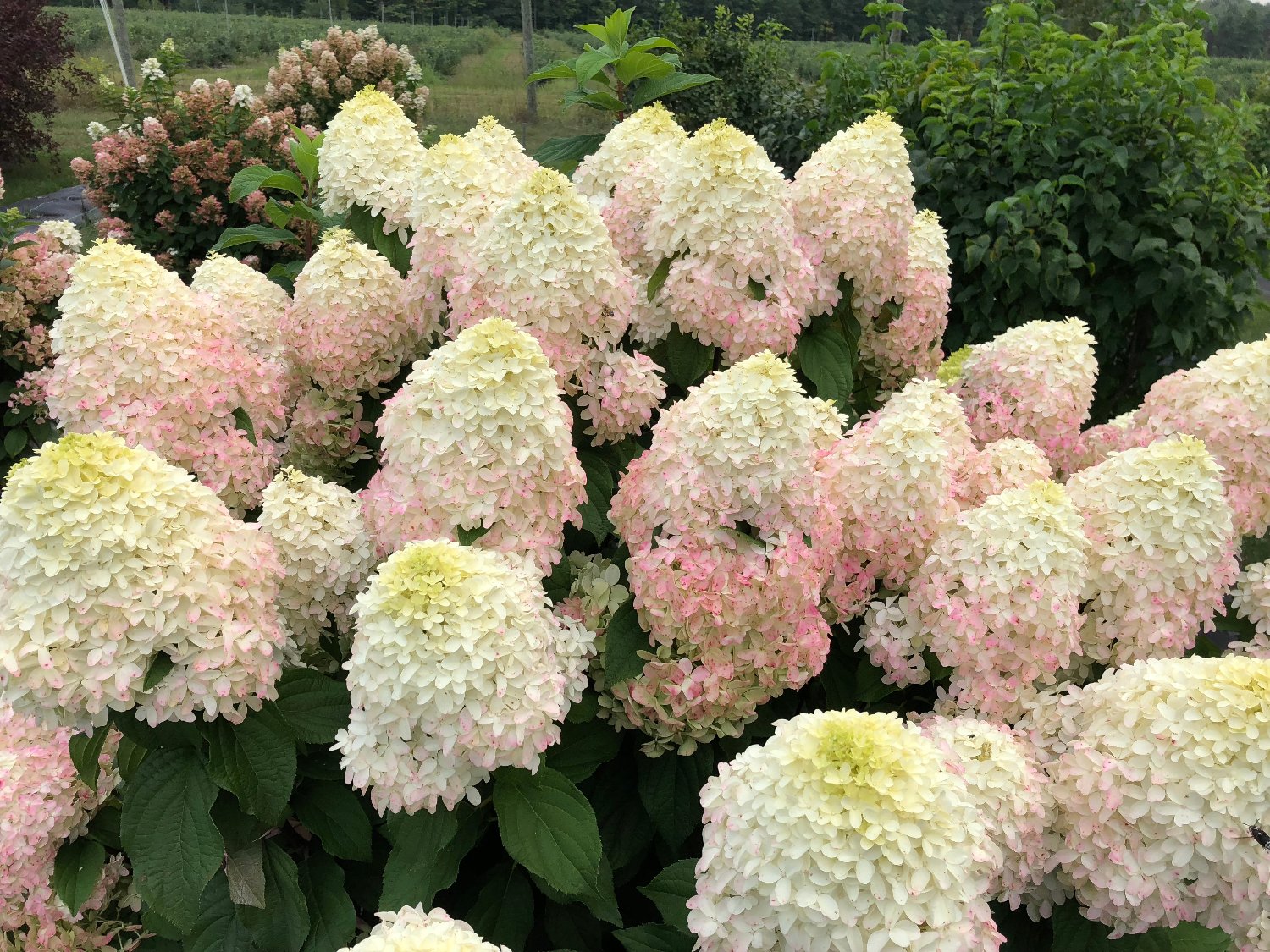
If flowers turn brown and dry instead of aging to pink or red, this indicates that the plant needs more water or that nighttime temperatures are too high for the transition to occur. Flower color is unaffected by soil chemistry.

HYDRANGEA QUICKFIRE FULL
In cooler climates, full sun is recommended for best stem strength and flower set. Growing Tips Panicle hydrangeas are the most sun tolerant hydrangeas and are also resistant to wilting. Excellent for cut flowers, both fresh and dried. Uses Specimen mixed borders mass plantings. May be cut back harder if desired, though this tends to produce stems that are unable to achieve maximum stem strength the following season. Alternatively, cut back in autumn once the plant has gone completely dormant. This ensures that the growth for the season will come vigorous buds lower on the plant and also serves to remove any remaining dried blooms. Pruning In late winter or early spring, cut back by about one-third its total height, just above a set of large buds. Blue-blooming leadwort makes a nice massed underplanting in afternoon-shade areas.Soil Adaptable to most any soil except very wet or excessively alkaline soils. * Great partner: Catmint, salvia or dwarf Russian sage are good perennials around the base in sunny areas. Water needed only in very hot, dry weather after regular watering the first season to establish the roots.

HYDRANGEA QUICKFIRE TRIAL
Scatter granular organic or slow-acting fertilizer in April. The first to bloom Quick Fire ® hydrangea blooms about a month before any other panicle hydrangea - usually by 4th of July in our West Michigan trial gardens.

If you’re pruning as a tree, remove any new shoots from the base, remove lower branches to clear trunk, then cut back remaining canopy into a tight ball. Use it in a mixed border, or as a showy specimen or foundation plant. Thin out and cut back stems by one third to one half (even more to maintain a smaller plant). This dwarf form of Quick Fire fits easily into any landscape. Does fine in even full, direct summer sun but also blooms in half-day sun. But a line of them also makes a striking flowering hedge when planted 5 or 6 feet apart along a fence or property line. * Where to use: Great specimen for a house corner or a bed or border centerpiece. There’s also a Little Quick Fire variety that grows in the 4- to 5-foot range if the full-size Quick Fire is too big. Can be pruned into a single-stem small tree or treated as a mid-sized flowering shrub. Medium-green leaves turn yellow in the fall. Initially the flowers are white but as the season progresses, they gradually turn pink and deepen in color to a reddish purple or dark pink fall color. It blooms about a month earlier than any other cultivars of Hydrangea paniculata, starting in early to mid-summer depending on the local climate, and continuing throughout the summer and into the fall.

These flowers are white, and mature to a bright pink-red that hold their color until the fall. Quick Fire hydrangea is an eye catching shrub with several outstanding features. Large clusters of sterile and fertile flowers bloom a month earlier than the other paniculata cultivars. Quick Fire is the earliest of this type to bloom, starting two to four weeks sooner than the species. 07460 Quick Fire blooms about a month before other Hardy Hydrangea varieties and flowers every year Flowers open white then turn pink as summer progresses. Quick Fire is one of the first of the paniculata hydrangea cultivars to bloom in the summer. * What it is: A panicle type of hydrangea, also known as a hardy hydrangea, that gets showy masses of big, white cone-shaped flowers that turn to a rosy-white bicolor and then to darker rose from early summer into fall. * Botanical name: Hydrangea paniculata ‘Bulk’ Quick Fire Fab hydrangea shares the same super-early bloom time as the original and classic Quick Fire, but instead of open, lacecap flowers, it boasts big, thick mophead blooms. Quick Fire has a more compact habit at the same height.


 0 kommentar(er)
0 kommentar(er)
